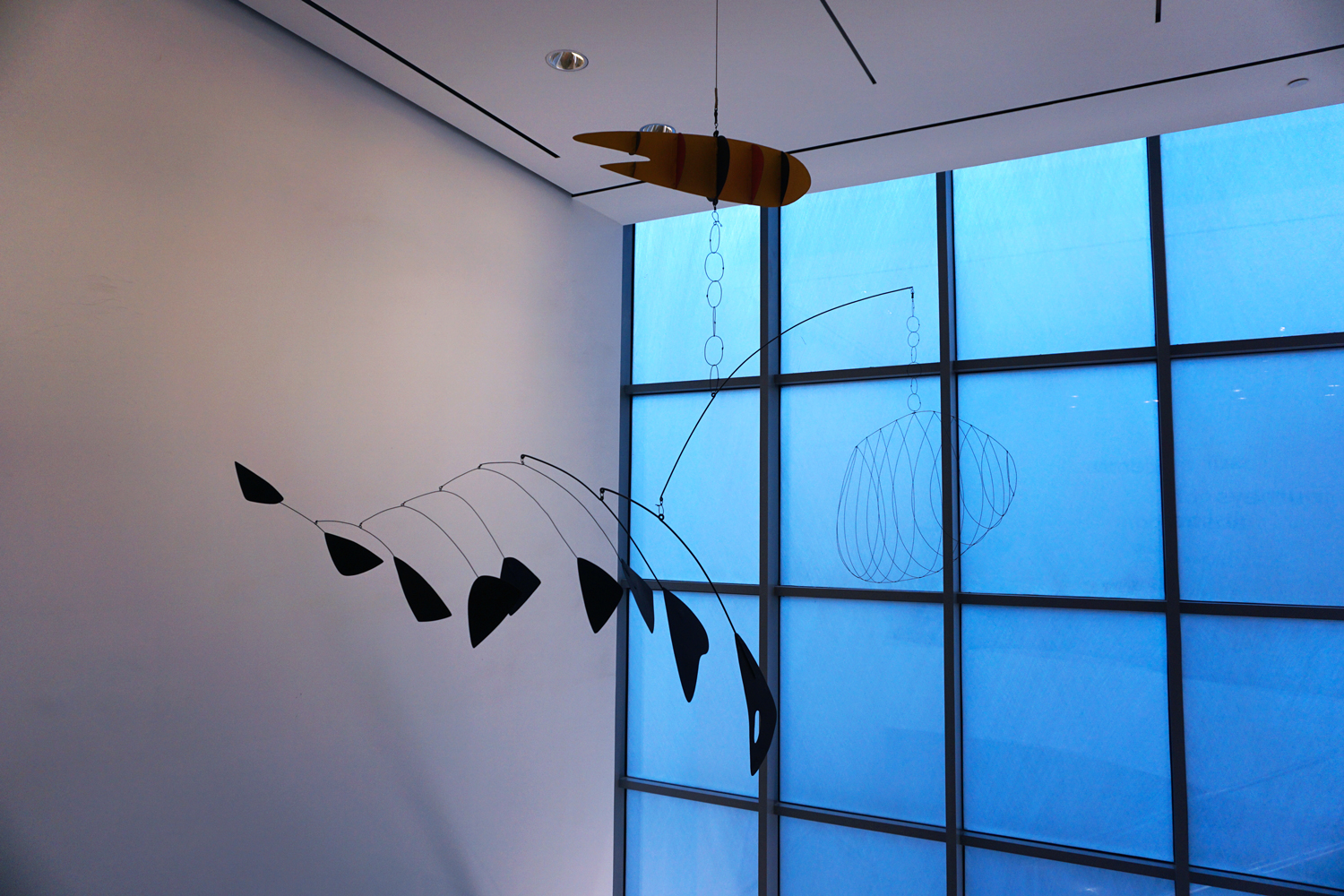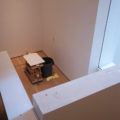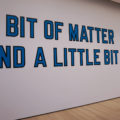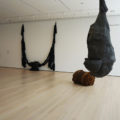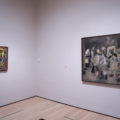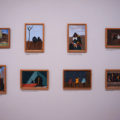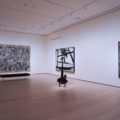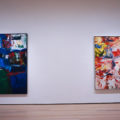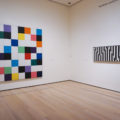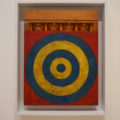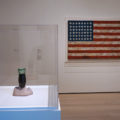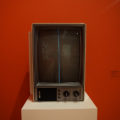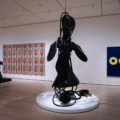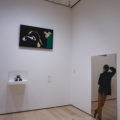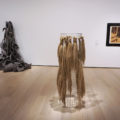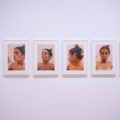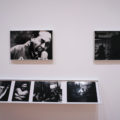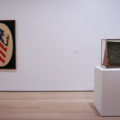[ad_1]
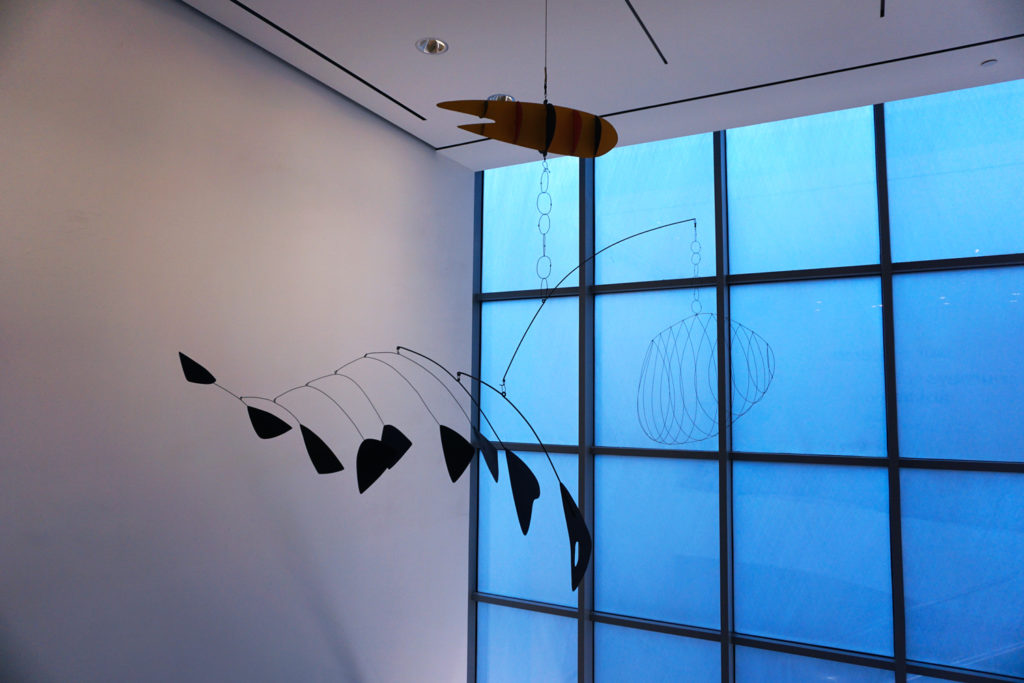
A lovely Calder mobile, 1939’s Lobster Trap and Fish Tail, graces one of the museum’s stairwells. The work was originally commissioned by MoMA the year the work was produced for one of the museum’s stairwells.
MAXIMILÍANO DURÓN/ARTNEWS
After a four-month-long closure and a $450 million renovation that has been years in the making, the Museum of Modern Art in New York opened to members of the press on Thursday morning, October 10.
The build-up to its opening has made it one of the most anticipated art events of this season, not just in New York but also internationally. With 166,000 more square feet of gallery space and three floors of permanent-collection hangs, the museum is even more overwhelming than before, as my colleague Andrew Russeth noted in his review of the new MoMA yesterday.
On its fourth floor, the curators of MoMA present “Collection, 1940s–1970s.” Here, one can see many of the museum’s hallmark works, by Jackson Pollock, Barnett Newman, Willem de Kooning, Andy Warhol, Jasper Johns, Robert Rauschenberg, and many more.
The floor builds on work done by international institutions, with pieces on view by artists such as Graciela Iturbide, Lygia Pape, Lygia Clark, and others outside the canon who have recently received retrospectives, though the floor remains New York–centric, placing an emphasis on Abstract Expressionism and early experiments with Pop. It feels as though the museum could have rounded out its galleries with a greater emphasis on under-recognized histories—for example, that of Los Angeles’s postwar scene, which was the subject of the Getty Foundation’s first Pacific Standard Time initiative, done under the aegis of the late Deborah Marrow in 2011.
Still, there are expert pairings of works to be found. An Ellsworth Kelly can be found alongside a Carmen Herrera, and a prized de Kooning appears near an under-exhibited Grace Hartigan.
Below, a look around MoMA’s fourth floor, in the second part of ARTnews’s photographic series devoted to MoMA’s reopening. Part 1, looking at the fifth floor, published on Thursday. Part 3 will publish in the coming days.
-
A very mysterious work is visible only while descending a stairwell. According to a wall text, it’s a sly work by the conceptual giant Marcel Broodthaers.
MAXIMILÍANO DURÓN/ARTNEWS
-
A lovely text work in blue by Lawrence Weiner reads, A BIT OF MATTER / AND A LITTLE BIT MORE.
MAXIMILÍANO DURÓN/ARTNEWS
-
A magnificent bronze-and-fiber work by Barbara Chase-Riboud anchors a sculpture gallery, titled “New Monuments,” that opens the museum’s fourth floor. The standout piece, on the back wall, changes depending on how it’s installed. This version is The Albino. Nearby, are works, from left, by Lynda Benglis, Jackie Winsor, and Louise Bourgeois.
MAXIMILÍANO DURÓN/ARTNEWS
-
The fourth floor includes many lovely conversations between paired paintings. Here two paintings made within a year of each other: from left, Norman Lewis’s 1946 Phantasy II and Arshile Gorky’s 1945 Diary of a Seducer.
MAXIMILÍANO DURÓN/ARTNEWS
-
MoMA owns half the works in Jacob Lawrence’s landmark “Great Migration” series. (The Phillips Collection in Washington D.C. owns the other half.) Pictured here are works from MoMA’s holdings.
MAXIMILÍANO DURÓN/ARTNEWS
-
MoMA has barely changed its Abstract Expressionism gallery, with the usual suspects still present together: from left, Jackson Pollock’s One: Number 31, 1950, Franz Kline’s 1954 Painting Number 2, David Smith’s 1956 sculpture History of LeRoy Borton, and Willem de Kooning’s Woman I, 1950–52.
MAXIMILÍANO DURÓN/ARTNEWS
-
Grace Hartigan’s stunning Shinnecock Canal (1957), at left, bests Willem de Kooning’s 1977 Untitled XIX.
MAXIMILÍANO DURÓN/ARTNEWS
-
This pairing is the kind of intellectual conversation where both parties leave feeling enriched by the other. From left, Ellsworth Kelly’s 64-panel Colors for a Large Wall (1951) and Carmen Herrera’s black-and-white 1952 abstraction, Untitled, which entered the collection in 2005.
MAXIMILÍANO DURÓN/ARTNEWS
-
Jasper Johns’s iconic 1955 mixed-media work Target with Four Faces. When the work appeared on the January 1958 cover of ARTnews, it anointed Johns a new star in the postwar art milieu.
MAXIMILÍANO DURÓN/ARTNEWS
-
Marisol’s 1962 Love sculpture made from plaster and a Coca-Cola bottle sits in front of Jasper Johns’s Flag, 1954–55.
MAXIMILÍANO DURÓN/ARTNEWS
-
In a room titled “At the Border of Art and Life” dedicated to the avant-garde Fluxus movement is Nam June Paik’s Zen for TV, 1963/81, showing a single blue line down the center of a sideways old-school TV.
MAXIMILÍANO DURÓN/ARTNEWS
-
A menagerie of the male heavyweights from the 1960s: from left, Andy Warhol’s Campbell’s Soup Cans (1962), Claes Oldenburg’s Giant Soft Fan (1966–67), and Edward Ruscha’s OOF (1962).
MAXIMILÍANO DURÓN/ARTNEWS
-
An unexpected trio comes in, from left, Idelle Weber’s Untitled cube work, from ca. 1968–70, which years later would serve as the inspiration for the opening credits to Mad Men; Rosalyn Drexler’s 1966 Hold Your Fire (Men and Machines); and Michelangelo Pistoletto’s 1964 Man with Yellow Pants.
MAXIMILÍANO DURÓN/ARTNEWS
-
On the ceiling in a room about Pop art, titled “From Soup Cans to Flying Saucers,” is James Rosenquist’s 1963 work Doorstop.
MAXIMILÍANO DURÓN/ARTNEWS
-
At center is Dan Flavin’s 1968 untitled (to the “innovator” of wheeling Peachblow), flanked by Walter de Maria’s Cage II from 1965, left, and Anne Truitt’s 1962 painted-wood sculpture Catawba.
MAXIMILÍANO DURÓN/ARTNEWS
-
This trio is quite spectacular: from left, Robert Morris’s felt work that cascades down from the wall, Untitled (Tangle), from 1967; Marisa Merz’s 1966 Untitled sculpture with hemp that appears like knotted hair tied to a wire mesh frame; and Carol Rama’s watercolor Opera n. 11 (Renards), from 1938.
MAXIMILÍANO DURÓN/ARTNEWS
-
Four works by Edward Krasiński from 1972 make up this installation that’s united by a blue painter’s tape.
MAXIMILÍANO DURÓN/ARTNEWS
-
A room titled “Idea Art” looks at the experiments of Conceptual art during the 1970s. Here, Ana Mendieta’s 1972 Untitled (Glass on Body Imprints—face).
MAXIMILÍANO DURÓN/ARTNEWS
-
A gorgeous installation of photographs from 1970s Japan by Daido Moriyama in a stunning room titled “Four Photographers, Four Places” that also includes Graciela Iturbide’s images of Mexico, Miguel Rio Branco’s of Brazil, and Garry Winogrand’s of New York.
MAXIMILÍANO DURÓN/ARTNEWS
-
This conversation is perhaps the most heartwarming and gut-wrenching one: On the third floor, from left, David Hammons’s 1969 Pray for America and Paul Thek’s 1965 Hippopotamus Poison.
MAXIMILÍANO DURÓN/ARTNEWS
[ad_2]
Source link

